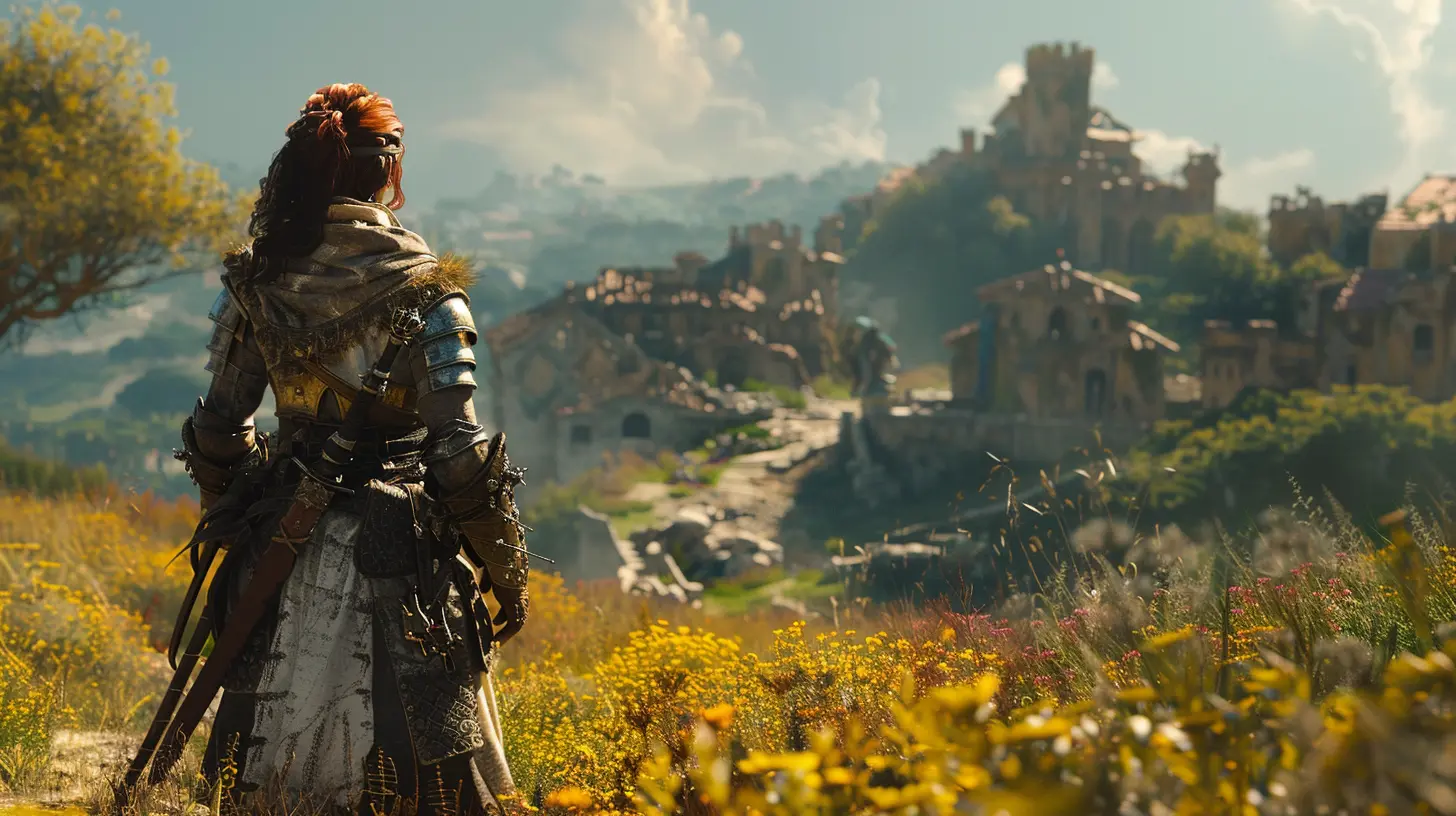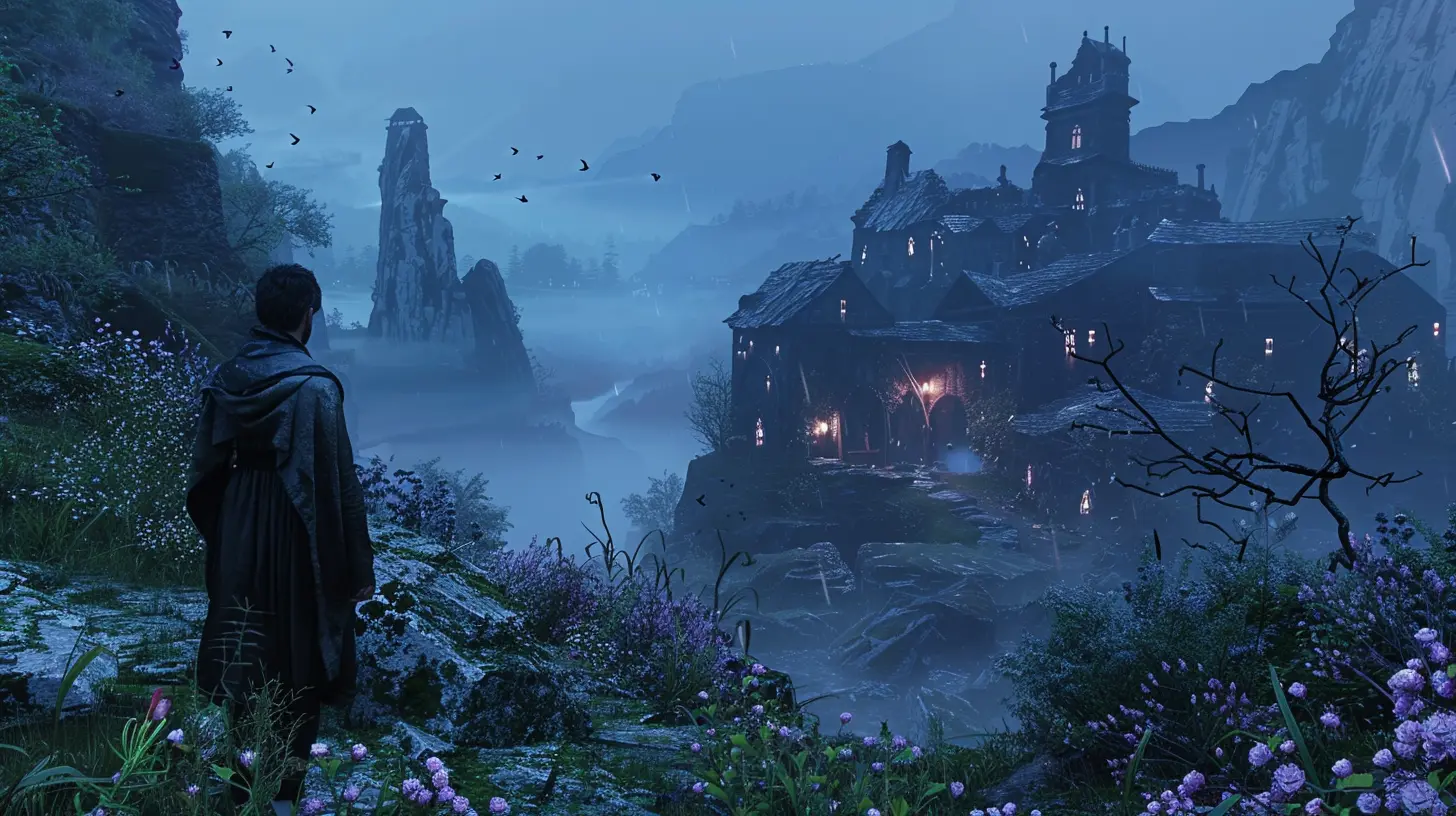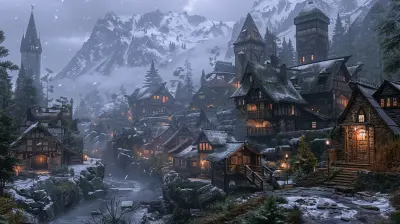Immersive Quest Design: Merging Gameplay and Narrative
26 November 2025
Hey there, fellow adventurer! Let’s take a moment to appreciate something truly magical—those jaw-dropping, time-losing, brain-bending quests in video games. You know, the ones that leave you gasping as you spiral down a rabbit hole of intrigue, mystery, and wonder. Those quests that meld gameplay and narrative so seamlessly it feels like you've been transported into an alternate reality.
Today, we're diving deep into immersive quest design and how it masterfully merges gameplay mechanics with storytelling. Don’t worry—this won’t read like a boring college lecture. I’m here to drop the essentials, sprinkle in some wit, and help you see why this marriage of gameplay and narrative is the real MVP of game design. Ready your loot bags; here we go!
What Even IS Immersive Quest Design?
Good question! Immersive quest design is like baking a cake—stay with me here. The gameplay mechanics are the actual ingredients, and the narrative? That’s the frosting. When done right, they come together to create a masterpiece you can’t stop indulging in. It’s about crafting quests where you don’t just play the game; you live it, emotionally invested in the story and characters while actively immersed in the gameplay.Think about the first time you played The Witcher 3. Remember Geralt’s quest to find Ciri? It wasn’t just "go here, kill that, fetch this." No, it was an epic journey packed with real emotions, complex decisions, and gut-punch twists. The gameplay challenged you to fight, explore, and strategize, but the narrative kept you hooked because you genuinely cared about the outcome. That, my friend, is immersive quest design done right.
How Gameplay Meets Narrative: A Perfect Marriage
Let’s face it—when gameplay and narrative are treated like distant cousins at a family reunion, the experience feels off. But when they’re soulmates? That’s when the magic happens. Here's how game developers pull it off:1. Player Agency: You’re Not Just a Puppet
Good immersive quests give you a sense of control. You’re the captain of the ship, steering the story based on your decisions. Just like in Mass Effect, every choice (even the tough ones) made you feel like you were shaping the galaxy.When players feel like their actions matter, they become emotionally invested. And let’s be honest, nothing beats the satisfaction of saying, “Yeah, that outcome? That was all me.”
2. Environmental Storytelling
Sometimes, the best stories aren’t told—they’re shown. Immersive quests often weave the narrative into the environment itself. In Dark Souls, for example, the cryptic lore is embedded into the architecture, enemy placement, and item descriptions. It’s like being handed a treasure map and piecing the story together as you go.If the environment tells a story, it deepens the player’s connection and keeps them intrigued without spoon-feeding them every detail.
3. Dynamic NPCs: They’re Not Just Background Props
A quest is only as good as the characters involved. Immersive quest design breathes life into NPCs (Non-Player Characters). They're not just quest vending machines—they have personalities, motives, and arcs of their own. Think of Red Dead Redemption 2’s townsfolk or Skyrim’s Lydia (even if she was a bit too eager to carry your burdens). They make quests feel personal, like you’re interacting with actual beings, not robots.
Why Immersive Quests Work (And Generic Ones Don’t)
Let’s compare immersive quests to, well, the opposite—basic, bland fetch quests. It’s the difference between a gourmet meal served on a silver platter and a soggy microwave burrito.The Generic Fetch Quest Blues
- “Go fetch 10 wolf pelts.”- “Thanks, now bring me 5 bear claws.”
- “Oh, one more thing, slay the dragon.”
Yawn. These quests are functional at best. You’re just ticking boxes without any connection to the task, the quest-giver, or the outcome. There’s no "why"—just a to-do list.
What Immersive Quests Get Right
- They give you context. Why do you need the wolf pelts? Maybe they’re to craft armor that’ll save a village.- They build tension. It’s not just about collecting bear claws—it’s about sneaking past a patrol of bandits who could snatch the claws for themselves.
- They hit you in the feels. You slay the dragon, sure. But midway, you learn it was protecting its offspring, and suddenly, you're questioning everything. #moraldilemmas
Immersive quest design leverages narrative to elevate the gameplay. It's not about mindless tasks—it's about weaving a meaningful story that makes even the simplest action feel epic.
Games That Nail Immersive Quest Design
Now, let’s give a standing ovation to some games that crushed it in the immersive quest department. If you haven’t played these yet, what are you doing with your life?1. The Witcher 3: Wild Hunt
This one’s a no-brainer. Each side quest in The Witcher 3 feels just as important as the main story. Take the infamous “Bloody Baron” questline—it’s heartbreaking, nuanced, and totally unforgettable. The gameplay makes you work for it, but the story keeps you emotionally hooked.2. Skyrim
Sure, Skyrim has its fair share of fetch quests, but its guild questlines? Pure gold. Joining the Dark Brotherhood or the Thieves Guild feels like an alternate life path, not just a detour.3. Red Dead Redemption 2
Somehow, this game made even picking herbs feel significant. The quests may start simple, but they spiral into intricate narratives that pull you deep into Arthur Morgan’s world. By the end, you’ll feel like you are Arthur.4. Disco Elysium
Let’s talk about a game that flips quest design on its head. In Disco Elysium, there’s no combat—it’s all about dialogue and choices. Yet, somehow, every conversation feels like an epic quest, thanks to sharp writing and a narrative that adapts to how you play. It’s quirky, it’s weird, and it’s brilliant.Challenges in Creating Immersive Quests
Making immersive quests isn’t all sunshine and rainbows. Developers face some serious hurdles:1. Balancing Freedom with Structure
Players love freedom, but too much can lead to chaos. It’s a tightrope walk between giving players agency and guiding them toward a cohesive story.
2. Resource Heavy
Immersive quests need detailed writing, voice acting, world-building, and more. This level of polish takes time, money, and a whole lot of caffeine.
3. Player Behavior
Players are unpredictable. Some will savor every detail; others will speedrun past your carefully crafted narrative. Designing quests to accommodate all playstyles is an art in itself.
The Future of Immersive Quest Design
As technology advances, immersive quests are only going to get better. With AI stepping into the mix, imagine NPCs that adapt dynamically to your actions or entirely procedurally generated quests that feel as heartfelt and intricate as handcrafted ones. The possibilities are endless, and honestly, it’s an exciting time to be a gamer.But one thing’s for sure—no matter how fancy the tech gets, the heart of immersive quest design will always be the human touch. It’s about creating stories that move us, characters we love (or love to hate), and worlds we can lose ourselves in.
Wrapping It Up: Why We LOVE Immersive Quest Design
In the end, immersive quest design is the secret sauce that makes gaming unforgettable. Sure, we love great graphics and tight mechanics, but without that deep narrative and emotional connection? Meh, it’s just pixels.Games that masterfully merge gameplay and narrative invite us to step out of our mundane lives and live an adventure. They create moments that stick with us long after the credits roll. And honestly, isn’t that what gaming’s all about? So the next time you’re running a quest, take a moment to appreciate the sheer brilliance behind it. Somebody poured their heart and soul into making sure you felt something.
Alright, that’s it from me. Now, go slay some dragons—or, you know, pick up 10 wolf pelts if you absolutely have to. Just make sure it’s worth it!
all images in this post were generated using AI tools
Category:
Interactive StorytellingAuthor:

Kaitlyn Pace

